

INTERNATIONAL
MAY 2024
Credit: MICHAEL SELWOOD
MEMBERS

ROYAL PHOTOGRAPHIC SOCIETY
RPS House, 337 Paintworks
Arnos Vale, Bristol BS4 3AR +44 (0)117 316 4450
Editor: JANET HAINES international@rps.org
Assistant Editor JEAN ROBSON FRPS digmem@rps.org
Contributing Editor SIMON ELSY LRPS
Contributing Editor & Layout: CHRIS RENK
THE RPS
Chief Executive Officer: DAN JONES
Finance Director: NIKKI MCCOY
Director of Marketing and Membership: LUCINDA STEWART
Membership Community Manager: NATHAN WOODMAN membership@rps.org
Membership Assistant: DEBBIE CANT
IFC - All right reserved.
COVER PHOTO
Michael Selwood ARPS
Hotel New York, Rotterdam
I don’t have a suitable photograph in portrait format from the Hague, so I am sending this one from the Hotel New York in Rotterdam.
One of the few relics following WW2, the hotel has become dwarfed by its neighbours. I lived through the war and became an architecture student just a few years later.
So, this photograph expresses resonances I feel when in Rotterdam, such as the positivism of those post-war times and the will to make things better.
For the Dutch, Rotterdam is an equivalent of Dresden in spirit, though not in style. It is a vibrant, colourful city different from the rather dour city of Haarlem.
The photograph was made with my pocket Olympus TG6, post-processed in Affinity Photo, and I used a Nik Silver Efex plug-in for black and white.
1 CONTENTS 02 OPENING SHOT Welcome to the Royal Photographic Society 04 MEMBER FEEDBACK Landscape Group 2023 Online Zine Project 08 SPECIAL INTEREST GROUPS What are SIGs and where to find them 12 ONLINE OPPORTUNITIES e-Circles, Online Events 14 JOINT PHOTO CHALLENGE Summer / Winter Challenge 16 INTERNATIONAL MEMBERS INTERVIEW Peo Orvendal 20 MY HOME – PARIS by Gary Davis 26 MY HOME – HONG KONG by Lawrence Cheung 32 WHAT TO READ Publications available on ISSUE 34 REACH OUT Make contacts with other RPS members


…. to everyone wherever you are in the world. You are all part of the Royal Photographic Society community.
2 OPENING SHOT
This is the third of our International Newsletters, and we hope that you are finding them interesting and useful. Our aim is to make you all feel fully included in as many RPS meetings and events as possible. These days, many of the groups offer online or hybrid meetings. Many are recorded so you can catch up in your own time zone. By adopting these working practices, we are endeavouring to engage with all international members.
We value your input and contributions. If there is something you would like us to feature or you have something to share, please don't hesitate to get in touch via international@rps.org
Your ideas and experiences are what make our community vibrant and diverse.
The newsletter comes out each quarter, with additional catch-up emails each month. Keep an eye on your SPAM folder, as RPS emails often end up there.
All our newsletters can also be accessed via the RPS International web page https://rps.org/international/.
In addition to the newsletters, we are also endeavouring to update much of the material on these web pages, including more recent member successful Distinction panels.
If you have recently gained a Distinction and would like to be featured, then again do email international@rps.org.
Our Facebook group https://www.facebook.com/groups/352852560759757 is a fantastic platform for you to showcase your images and connect with other international members.
We encourage you to join us and be part of our growing community.
Regards
Your international members volunteer support team.
3 OPENING SHOT

EXPLORING LANDSCAPE NARRATIVES: A JOURNEY THROUGH THE LANDSCAPE GROUP 2023 ZINE PROJECT & ZINE PROJECT
By Theresa Bradley
Join Theresa Bradley on a creative odyssey through the Landscape Group's 2023 Online Zine Project, where international members like her brought distant landscapes to life in captivating Zines. Discover the journey of artistic exploration, collaboration, and self-discovery that unfolded across borders.
4 MEMBERS FEEDBACK
Credit:
THERESA BRADLEY
In the Spring of 2023, the Landscape Group launched the online Zine Project. As an international member, I was delighted to be part of a project from a distance.
The project ran until the end of December 2023, with the additional choice to be part of a zine swap with other participants on completion. A broad definition of landscape was provided for work. In this age of digital photography, with many of my images only residing on hard drives, this was an excellent time to commit to printing some of my work.
This stepped nicely into zine workflows, discussing the pros and cons of various design options and apps that covered multiple requirements, including skill levels, pricing, and accessibility, depending on your location.
Next came some decisions. What was the story I wanted to share? How many images would tell this story? What size would these images be? How many pages would the zine have?
River
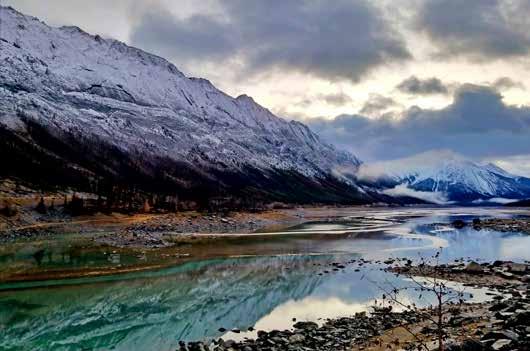
It sounded exciting, and I immediately signed up. Then, I realised I had no idea where to start. Little did I know Fiona and the team had that covered, and I completed and printed my first zine!
The Zine project, with Fiona McCowan FRPS as project manager, had presentations from Tim Daly and Euan Ross scheduled throughout the time-line.
In the first briefing in April 2023, Tim Daly introduced zines, their history, and influences, along with examples of several zines produced by other photographers. The briefing also provided zine publishers, photo paper selection, and print quality information.
The Story: There was an idea I had mulled over many times that was very suited to this project. In the Canadian Rockies, in Jasper National Park, there is a body of water called Medicine Lake.
An area about 4 miles long, it behaves more like a bathtub. It fills as the Maligne River backs up during high snow-melt levels, draining again as the melt waters subside. This provides a diverse and ever-changing ecosystem. How many images, pages and what size would tell the story: After researching some of the suggestions from the briefing and my local printing shops, I generally decided it would be between 16 and 32 pages. Closer to 16 pages if A4 or maybe 24 if A5.
5 MEMBERS FEEDBACK
Maligne
Knowing the project story was shaped by the four seasons and that I preferred something smaller for easy opening if someone has it on their lap, I settled on 24 pages and A5 size. With a plan forming and the summer months stretching ahead to explore ideas and gather images, time seemed plentiful—or so I thought!
The more I researched, the more I realised how many exciting directions there were to wander down. This is when I found the briefing handouts and the recording even more valuable. Reviewing the zine workflows helped me focus on the best path for my project. I narrowed it down to two of the work-flow suggestions.
The Book Module in Lightroom can be exported to Blurb or for non-Lightroom users, using the free Blurb software Bookwright. https://www.blurb.ca/bookwright
Next was gathering potential images and narrowing them down. This was an excellent exercise to do sooner rather than later.
It identified images that, even if they were good, did not fit the story, and there was still enough time to go back out on another shoot.
In September, we had an online presentation by Euan Ross, a podcast host and curator of the Biblioscapes library. https://biblioscapes. com/the-library

Euan has a collection of photographers’ photobooks and a podcast that he shares online. He discussed the areas to be considered when producing your work for publication, and I found exploring other photographers’ approaches very helpful. This was followed at the beginning of November by a session with Tim Daly, during which we could share our progress for review.
Details were provided a few weeks ahead for uploading information, and Tim provided written comments to the makers and discussed the ideas during the presentation. I did not feel prepared enough to submit a draft, and that is something I would do differently next time. Tim gave feedback even if the zine was incomplete. The discussion covered many points, including borders, bleeding, text size, and placement.
One comment that stuck with me was Tim’s feedback on a member’s zine where the front and back cover flowed well together when you turned it over and could see both covers together. This helped me decide on my back cover.
Now, it was time to finalise my image selection. As a starting point, I gathered about 60 potential images into a folder, displayed them on the monitor and narrowed them down to 24, contemplatiry the flow of the seasons and colours. I could then rearrange, switch out and edit as required until I found the final images for the zine.
Although I used Photoshop and Lightroom for some basic processing and had dabbled in the Lightroom book module, it was still a learning curve, which I was embracing!
It was back to the brief again to remind myself of paper choices, binding, format, and printing options, and then I looked at pricing. While researching approaches to printing, once you have decided where to print your zine, the first thing to do is check what software is compatible with the printer’s process.
I decided to work with a local printer for handson help and called to confirm this. While they worked with a few options, Canva was the best way to share with them.
6 MEMBERS FEEDBACK
Zine Front & Back Cover

While I was still embracing the learning curve in the Lightroom Book module, I was already familiar with Canva, which would improve my workflow. https://www.canva.com
Everything went smoothly at the printing stage, with a tiny adjustment in the final run when my choice of saddle stitch binding required a switch to the zine's orientation, from opening right to left to opening from the bottom up.
Once I saw the zine with the saddle stitch across the top, I preferred this orientation and would keep this in mind for other projects.
What would I do differently?
• Printing the near final selection of images on 4in* 6in paper from one of the big printing shops. This would let me first move around the prints on a table or desk.
• I would submit the zine for review even if it were only partially completed. Tim's feedback was exceptional.
This was an exciting project to be part of, particularly as an international member. There was continued support throughout the duration, and I found the online engagement with other members helpful. The presentations and handouts were vital for me to start the process.
I want to thank Fiona, Tim, Euan, and the team for all their work in making this happen for members. Seeing my work in a printed zine for the first time was fulfilling, and I look forward to producing more.
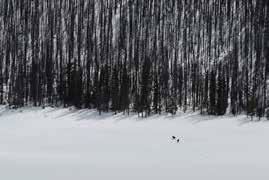 Theresa Bradley, Alberta, Canada
Theresa Bradley, Alberta, Canada
7 MEMBERS FEEDBACK
Near Final Cut
Zine Back Cover
WHAT IS A RPS SPECIAL INTEREST GROUP (SIG) AND WHY WOULD YOU JOIN ONE?
Members elect to join groups and these are an optional extra to membership of the RPS.
Often they are based on a specific genre or aspect of photography that individuals closely align themselves with. The easy ones to identify with are Landscape, Nature, Travel etc and the less obvious might include Women in Photography or Digital Imaging as examples. At the end of this text is a list of all the various groups, a link to their web page, and a short statement about their purpose.
Each group is funded by a small annual subscription and sometimes additional fees for talks, workshops or specific activities. Because they are run exclusively by volunteers, who do not charge for the work they do to organise the various programmes, costs are kept to a minimum and what can be gained from membership represents amazing value for individuals. The staff team at RPS House run workshops, Distinctions, produce The Journal, and organise exhibitions; the life blood of the RPS is via the community groups.
Through community group membership you can engage with a wider variety of opportunities, gain inspiration, work closely with other RPS members. All groups are now considering how they can make more available to international members by recording meetings or putting them on at varying times.
It is worth following the links to the various web pages to see for yourself what each SIG offers. A few of them have even made short videos for the benefit of international members, which you can find HERE

8 SPECIAL INTEREST GROUPS
Schedule of Special Interest Groups
Analogue. https://rps.org/groups/analogue/
To foster community among enthusiasts and a practitioners in analogue photography; facilitating skill sharing, resource exchange, and collaborative projects; to promote appreciation for traditional photographic techniques and processes; and advocate for the continued relevance of analogue techniques in modern photography practice.
Archaeology & Heritage. https://rps.org/groups/archaeology-heritage/
To facilitate collaboration among photographers and archaeologists, promoting best practices in the documentation, preservation, and dissemination of photographic records of archaeological sites, artefacts, and cultural heritage; and to contribute to public awareness and education about the use of photography in these fields.
Audio Visual. https://rps.org/groups/audio-visual/
To explore, discuss, and promote various forms of temporal (time-based) art, including video, film, sound, and multiplemedia performances and presentations; to foster collaboration among artists, researchers, and enthusiasts; and to advance techniques, theories, and appreciation for time- based artistic expressions across diverse audio and visual disciplines.
Creative Eye. https://rps.org/groups/creative-eye/
To inspire, educate, and connect photographers exploring innovative and artistic approaches; we provide a platform for sharing ideas, techniques, and critiques, fostering a supportive community that encourages experimentation and pushes boundaries in visual storytelling and expression.
Contemporary. https://rps.org/groups/contemporary/
To provide a forum for the encouragement and representation of its members in the pursuit of the production of coherent bodies of photographic work that “convey ideas, stimulate thought and encourage interpretation; photographs about rather than of.
Digital Imaging. https://rps.org/groups/digital-imaging/
To facilitate learning, collaboration, and advancement within the realm of image-making in which digital photography is the principal medium; we provides a platform for discussing new technologies, sharing techniques, critiquing work, and exploring the evolving landscape of digital imaging, enhancing skills and fostering creativity.
Documentary. https://rps.org/groups/documentary/
Documentary photography seeks to capture and present truthful narratives through visual storytelling; we support photographers dedicated to documenting social issues, cultures, and historical events, fostering discussion, education, and advocacy to promote understanding, empathy, and social change through the power of documentary imagery.
9 SPECIAL INTEREST GROUPS
Schedule of Special Interest Groups
Historical. https://rps.org/groups/historical/
To act as a forum for photographic history, from the early nineteenth century to the present day; to promote knowledge of the history of photography and to encourage the preservation of photographs, photographic equipment and documents relating to the history of photography.
Imaging Science. https://rps.org/groups/imaging-science/
To provide a forum for the exploration and understanding of the science behind photography and other imaging systems; we facilitate interdisciplinary collaboration among scientists, engineers, and practitioners to discuss and drive progress in research, development, and real-world applications of imaging systems.
Landscape. https://rps.org/groups/landscape/
To encourage the art and practice of landscape photography and advance the skills of those photographers working in this genre; and to spread understanding and enable development of these techniques through practical use and collaboration.
Medical. https://rps.org/groups/medical/
To promote the use and advancement of imaging in all branches of medical and allied sciences to support medical developments, patient-care, medical education, research and publications.
Nature. https://rps.org/groups/nature/
We seek to celebrate, conserve, and share the beauty and wonder of the natural world through photography; we foster a community of photographers passionate about wildlife, landscapes, and ecosystems, promoting environmental awareness, education, and appreciation through reliable and accurate images, visual storytelling and advocacy.
Travel. https://rps.org/groups/travel/
To promote the enjoyment of photography that captures the spirit of a place; and to encourage and support the development of the skills necessary to achieve this ambition.
Visual Art. https://rps.org/groups/visual-art/
To support and encourage all types and styles of photography that shows evidence of a personal vision or style which conveys a sense of design, emotion, mood or some meaning which encourages the viewer to look beyond the subject.
Women in Photography. https://rps.org/groups/women-in-photography/
We are not a genre! We facilitate the celebration, education and collaboration of female and female-identifying photographers. We are the discussion that drives a greater awareness of the importance of women photographers past, present and future.
10 SPECIAL INTERESTS GROUPS
Subscription fees vary but as you can read none are very expensive and represent excellent value for money.

To join a SIG first go to the top right hand corner of the www.rps.org web page and click ‘Login’. Once you are logged in you will see a screen that says ‘Welcome’ and your name. Next to this is a blue link that says ‘Join a Specialist Group’ – click on this and you find a list of all SIGs. You simply check the box next to any/all you wish to join. If you have any difficulties with this process then email membership@rps.org for assistance.
11 SPECIAL INTERESTS GROUPS

E-CIRCLES
In the February edition, we highlighted the opportunities for members anywhere in the World to take part in e-Circles to discuss images, projects or processing.
12 ONLINE OPPORTUNITIES
Credit: JOHN DOE LRPS
If you would like to join our community of photographers who work together in groups to develop their ideas and skills, please have a look at the special interest groups' web pages.
The links are as following:
• Digital Imaging
• Landscape
• Visual Arts
Making Friends on the Talk-Walk-Talk Programme
The Digital Imaging Special Interest Group and the Landscape Group work together to deliver the Talk-Walk-Talk Programme, and recent events have involved photographing architecture and the built environment (ABE).
The programme involves participants watching a talk delivered by an expert using Zoom. Talks give participants ideas and techniques to try on a photo walk. Being widely separated, international members cannot join communal walks but can go out and try the techniques on their own.
Following the walks participants join a discussion of their work held on Zoom. These discussion events are held at different times of the day so that we can accommodate different time zones.
Recent events have resulted in us meeting interesting colleagues from around the World, which has been great fun! Two participants, Lawrence and Gary, have provided us with some suggestions for anyone who would like to photograph their home countries.
After all the walks and discussion meetings have taken place, we produce an e-Zine to showcase some of the work. The most recent e-Zine can be read here.

Talk-Walk-Talk.. Architecture and the Built Environment
Our next exciting topic for Walk-Talk-Walk is woodland photography. We're eagerly looking forward to exploring this theme with you, so keep an eye out and consider joining in!
13 ONLINE OPPERTUNITIES

SUMMER/WINTER CHALLENGE
As we step into May, the days lengthen and the warmth intensifies in the northern hemisphere. Yet, it's equally intriguing to acknowledge that our members in the southern regions experience the opposite. However, let's not allow the weather to deter our passion for photography. Often, the most captivating images emerge on the most unexpected days, regardless of our geographical locations.

14 JOINT PHOTO CHALLANGE
Credit: XXXX
With this in mind, we want to set you all a challenge for a mid-summer/winter day—21 June. We call this the Summer Solstice in the Northern Hemisphere, but I guess it is the Winter Solstice for those in the Southern Hemisphere. Wherever you are in the world at mid-day (12.00) on 21 June, we want you all to take a photo of where you are. You might plan to be somewhere spectacular, or you might be at work or home. Maybe you are with friends or family and take a snap of them. The possibilities are endless, and we're excited to see the unique perspectives each of you will bring. This challenge is an opportunity to capture the beauty in the ordinary and the extraordinary.
You can then each send in one shot, and it needs to be titled as follows:
• Country name_location_what_YourName.jpg So, for example, UK_BoveyTracey_AvonRiver_JanetHaines.jpg
Please name them accurately. This information will be used in the e-Zine we produce to celebrate this worldwide collection of members' images. It will also go on to the RPS International web page to showcase all your work.
Images should be the following size:
• 2000px on the longest side.
• Files no larger than 5 MB.
• Format JPG
In June, we’ll provide you with clear instructions on where to upload your images. Rest assured, the process will be straightforward and user-friendly. We're committed to supporting you every step of the way. For now, mark your calendars for 21 June and get ready to participate in this thrilling challenge.

15 JOINT PHOTO CHALLANGE

INTERVIEW WITH PEO ORVENDAL FOR RPS INTERNATIONAL NEWSLETTER
Peo's life took a transformative turn when he moved from Sweden to Seattle. Embracing photography, he discovered a profound connection to landscapes, shaped by his evolving perception of both environments. His images reflect this deep bond, capturing the essence of nature and the nuances of his changing surroundings.
16 INTERNATIONAL MEMBERS INTERVIEW
"Absolution" — Death Valley

Credit: PEO ORVENDAL
Q1. You live in a very beautiful part of the United States. How long have you lived there, and does this influence the work you now produce?
In 2002, my wife and I relocated from Sweden to the Seattle area in the United States. Only a few years ago, I began to take my photography more seriously, which means I lack a direct before-and-after comparison to assess its evolution. Despite this, the move has significantly influenced my approach to landscape photography. I've realised that my photography aims to convey my profound connection with the natural landscape.
This transition to a vastly different environment from where I grew up compelled me to cultivate this connection actively. The importance of this bond became apparent to me only when I noticed its absence, prompting me to explore ways to develop it. While I can capture the beauty of a scene, the images that hold the most meaning for me are those that express this deep connection. For such expression to be possible, a genuine connection must first exist.
Additionally, my perception of the Swedish landscape has evolved over time. Landscapes that were once familiar to me revealed their true essence only after more than a decade of absence. I’ve come to appreciate its subtle topology, the mellow waters, and the character of its woodlands in a new light. A genuine appreciation of a landscape requires a combination of close, personal familiarity developed over time and the perspective gained from distance and time spent apart. This blend allows one to truly see, appreciate, and capture the full depth of a landscape through photography.
Q2. Do you see a difference in photographic style between your country of origin (Sweden) and that which you see in the USA?
The United States West Coast boasts remarkable diversity, ranging from dramatic coastlines and lush rainforests to arid deserts and glacial mountain peaks. Particularly in California, there's a notable emphasis on capturing the 'golden hour' due to the often present, warm, and depthenhancing light. Nature's vibrancy of colours is striking, and there's a palpable environmentalist influence, tracing back to John Muir's legacy.
Contrastingly, the Swedish landscape is characterised by dramatic seasonal variations—snow-laden scenes, the Northern Lights, and during summer, extended daylight hours and the midnight sun. The sun remains low on the horizon for long periods, resulting in prolonged twilight hours. Swedish art and design, known for their minimalist approach, is reflected in landscape photography, possibly due to the relative absence of epic landscapes and vivid colours.
The focus often lies on simplicity, with compositions that emphasise form, line, and colour in a subdued palette. This approach mirrors the natural scenery, especially in winter, when the light is soft and the tones muted, creating a serene atmosphere.
Q3. In a short summary, can you explain your concept of the overlap between psychology and photography?
The world doesn't lack photographs; instead, I aim to narrate the story of my personal connection with the environment through my images. To do this, I must first cultivate a genuine reciprocal relationship with the landscape I'm in. It is less about actively searching and more about maintaining an open, receptive state of mind, allowing the connection to emerge naturally. This process can be likened to mindfulness meditation, where the connection forms spontaneously rather than through forced effort.
It requires me to slow down, open my mind, and observe. I differentiate between self-expression and expressing one’s vision of the world, the latter being my primary focus. This pursuit of connection and relationship captivates me. Deeply connecting with nature can make the boundaries of self seem permeable, and there is something genuinely magical there. I aim to move beyond capturing mere shapes, colours, and motions and instead convey the essence of my perceptions, such as the dynamic interplay of elements in nature. I strive to create an image of direct perception rather than an intellectual interpretation of what I see.
Sharing an image I've created is an attempt to connect with another person, hoping to evoke a semblance of the feelings I experienced. Occasionally, one of my photos resonates, sparking joy in others. Nothing is more fulfilling than sharing my love for nature. And when someone says they see something uniquely “Peo” about an image I have made, I know that a human connection has been made.
17 INTERNATIONAL MEMBERS INTERVIEW

Q4. When did you join The RPS, and what encouraged you? Has your expectation of membership been met?
I joined the Royal Photographic Society (RPS) in February of this year. I have a few friends who are also members, and I greatly admire their work.
Learning from other photographers and artists has been incredibly enriching. I'm eager to meet more inspirational individuals within the RPS community to exchange ideas and insights on photography and art.
The RPS Vision, which aims to foster inspiration, creativity, and connection through photography for people of all ages and backgrounds, struck a chord with me.
Motivated by this vision, I've embarked on a journey to explore and understand more about the organisation's inner workings and how it embodies these ideals.
18 INTERNATIONAL MEMBERS INTERVIEW
"Cup of Joy" — Snoqualmie River

Q5. Please show us two of your own favourite images and tell us a little about them.
The "Cup of Joy" photograph was captured when I felt the Snoqualmie River finally acknowledging our bond. This connection was years in the making, and I realised the delay was partly because I had been too forceful in my approach, not allowing the river to reveal itself to me on its own terms. One day, while enjoying the tranquillity of nature with one of my adult children by the river, without any intention of taking photos, a glint of light caught my eye. It was as if the river was directly reaching out to me.
"Absolution" is a photograph I took in Death Valley during my first visit earlier this year. The place had an unexpectedly cleansing and healing effect on me. Among the various scenes I captured, including the seldomseen Lake Manly—temporarily filled with water from California storms—I felt the sweeping lines of the sand dunes most accurately conveyed my enduring impression of how the desert's essence impacted me. This photo is part of a small collection focusing on this theme. The rapid connection I formed with this new landscape moved me profoundly, as it's rare for me to bond so quickly with a new environment.
19 INTERNATIONAL MEMBERS INTERVIEW
Credit: PEO ORVENDAL
PARIS IN THE RAIN
By Gary Davis
In March, our RPS Member Gary Davis, a rural French resident, joined his wife in Paris for her conference. Opting for vintage gear, he embarked on a street photography adventure, capturing Parisian charm in raindrenched streets and iconic landmarks.
Ireside in Rural France, about 70km north of Limoges. In late March, my wife had to go to Paris for a conference and suggested I accompany her; my love for Paris made the decision easy. After a brief research, I stumbled upon an exhibition at the Magnum Gallery, a retrospective of Elliot Erwitt, whose work has always inspired me since I saw him speak to the RPS in London many years ago.
This exhibition sparked an idea for my trip. I decided to ditch my DSLR and go old school with my Leica M8 and a collection of vintage lenses, all at least 30 years old; this meant no autofocus and manual exposure. I also challenged myself to do some street photography, a genre far from my comfort zone. I usually indulge in landscape and wildlife photography.
With my plans in place, I set off to Paris. Paris is about 3 hours away by train, so we travelled there Friday afternoon. France has an excellent rail network; you can get fantastic deals if you book in advance. The conference was on Saturday afternoon, so we decided to go to the exhibition together in the morning.
That allowed us breakfast in one of the many street cafes, always better value than breakfast in a hotel and just part of Paris life. After breakfast and checking out of the hotel, which also allowed us to leave our luggage there to collect later, we went off to the exhibition. Travelling around Paris is easy; we both bought Navigo cards at a metro station; these can be easily topped up from a mobile phone.
The cost is €2 for the card and €8.65 for a 1-day pass. If you don’t know Paris, I would advise using a street map rather than just a metro map; the station names, unlike London, do not always use place names, which can be confusing. I always feel relatively safe in Paris. I have lived in London for over 40 years, so I have a good sense of street sense in cities.
However, I don’t take risks and try not to look like a tourist. I don’t use a camera bag; I keep everything in an old canvas shoulder bag, which is less obvious. When I have the camera around my neck, I also have a wrist strap to stop it from being snatched; also, like all major cities, pickpockets operate, so be aware. After an hour at the exhibition, feeling inspired by the fantastic work on show, we split up and I embarked on my photo trip.
I decided to take the metro to the Trocadero and walk back into the city from there; Trocadero is the nearest station to the Eiffel Tower. At this point, the weather was lovely and sunny, but I knew the forecast was for rain, and as I walked alongside the Seine, it changed.
Paris in the sun is undeniably beautiful, but Paris in the rain is a whole new world; the stonework glistens as the dust washes off, and reflections are everywhere, but the people behave differently.
I made my way up to the Tuileries Gardens via the Champs Elysees, captivated by the unique charm of a rainy Paris.
20 MY HOME

21 MY HOME
Tuileries Gardens
Credit: GARY DAVIS


In the gardens, the rain had driven most people indoors, which allowed me to take some pictures of the iconic ‘Luxembourg’ chairs scattered everywhere. From there, I moved up towards the Louvre; despite the rain, it was crowded with many tourists.
I found a group of girls taking turns posing with an umbrella for phone pictures, time for some ‘Street’;
I usually am very self-aware taking that type of image, but I realised that no one was taking any notice.
22 MY HOME
Cafe Kitsumi during rain
Iconic Luxembourg chair
Credit: GARY DAVIS
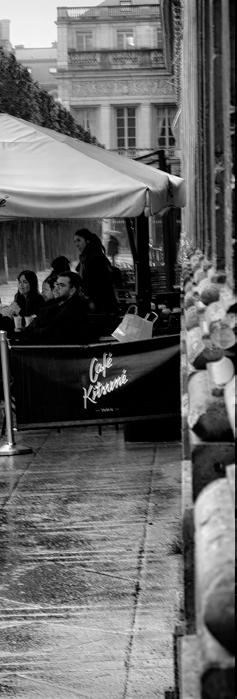
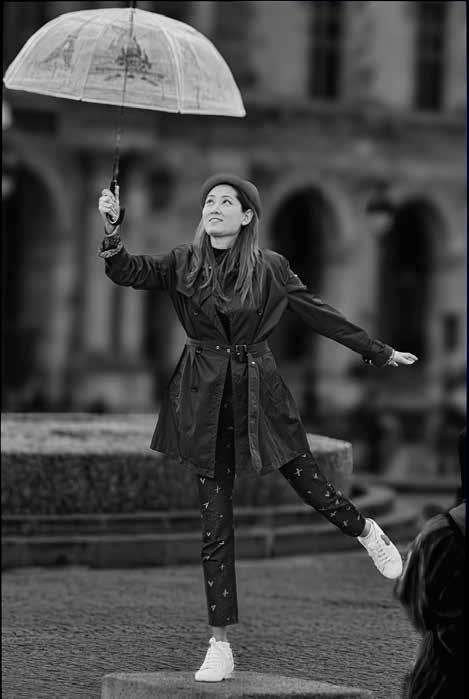
I moved from there toward the Marais, stopping to photograph a band playing in the pouring rain and on into the cloistered area beyond where I took the café picture; nothing interrupts coffee in Paris.
Although I only had half a day, I did what I wanted to do.
Paris is a fantastic location for a photographer, but being prepared is crucial.
23 MY HOME
Girls posing with umbrellas
Credit: GARY
DAVIS
Credit:
GARY
DAVIS
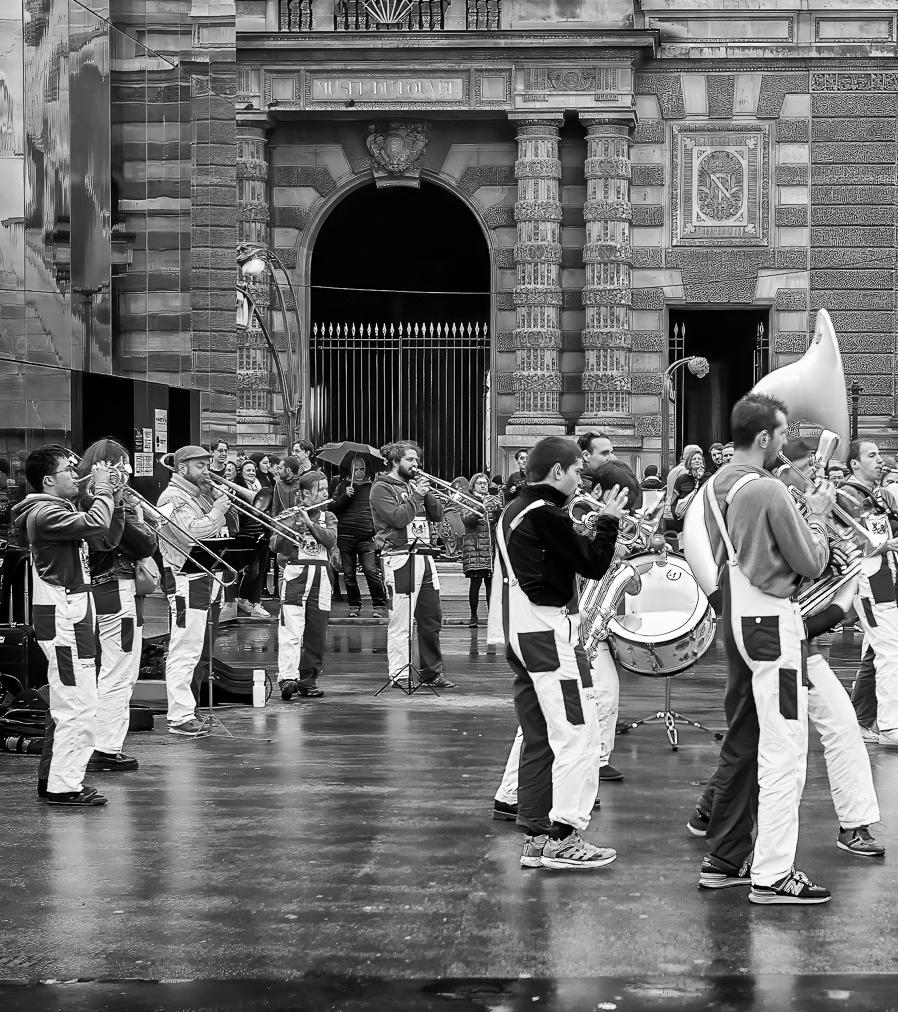
24 MY HOME

This year's Olympics will be very busy, and there will be lots of disruption.
Knowing the potential crowds can help you plan your visit more effectively and ensure you get the most out of your time in this beautiful city.
25 MY HOME
Band playing in the pouring rain
Credit: GARY DAVIS
CAPTURING HONG KONG'S ICONIC BUILDINGS
By Lawrence Cheung ARPS
Based in Hong Kong, our RPS Member Lawrence Cheung highlights iconic architectural sites like the M+ Museum and offers strategic advice for capturing their beauty.
Iam a photographer in Hong Kong. Architecture is one of my favourite subjects in my photography.
In Hong Kong, there are several iconic buildings with exceptional design, like M+ Museum in West Kowloon District, HK Cultural Centre, the Space Museum along the harbourfront in Tsim Sha Tsui and the Jackey Club Innovation Tower by Zaha Hadid in Hong Kong Polytechnic University in Hunghom district.
If you are interested in capturing architecture with light and shadow, Taikoo Place in Quarry Bay would be my recommendation. Taikoo Place is a commercial complex on the Eastern side of Hong Kong Island.
All of them are very well connected by public transportation, such as buses and the metro.
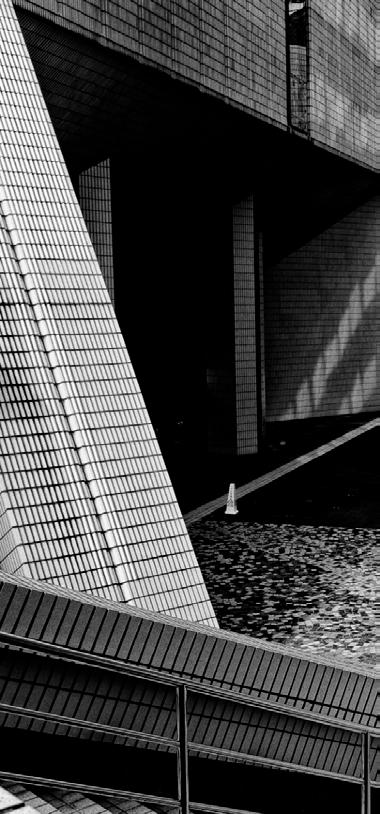
26
MY HOME

27 MY HOME Wishing well Credit: LAWRENCE CHEUNG ARPS

28 MY HOME

As a photographer in Hong Kong, I understand the challenge of avoiding passersby in architectural photos in our small and overcrowded city.
For those photo sites in Tsim Sha Tsui, I recommend going there in the early morning before heavy traffic.
This way, you can capture the architectural beauty without the distraction of crowds. In a Labyrinth
29 MY HOME
Credit: LAWRENCE CHEUNG ARPS
For Taikoo Place, the commercial complex, I usually go on weekends morning or late afternoon for more desirable lighting and fewer people in the frame.
Remember, the key is to be patient and strategic in your timing.
Happy shooting in Hong Kong

30 MY HOME
Spotlight

31 MY HOME Credit: LAWRENCE CHEUNG ARPS
CHAPTER AND SPECIAL INTEREST GROUPS PUBLICATIONS
Every month or quarter, the Royal Photographic Society's chapters and special interest groups publish documentation on their activities, events, and photo projects. This section provides a selection of publications and links to their online locations.

eMAGAZINE


GERMANY CHAPTER eMAGAZINE
1st Quarter 2024
https://issuu.com/royalphotographicsociety/docs/rps_deu_ emagazine_q1-2024-issuu
BENELUX CHAPTER EJOURNAL
Issue 4 Summer
https://issuu.com/royalphotographicsociety/docs/issue_4_ summer_2024
WOMEN IN PHOTOGRAPHY GROUP
February 2024
https://issuu.com/royalphotographicsociety/docs/we_are_ magazine_february_25.02.24
32
WHAT TO READ ...
LOCATION GUIDE UNDERGROUND PORTRAITS MUNICH'S UNDERGROUND



ANALOGUE GROUP JOURNAL
Issue 14
https://issuu.com/royalphotographicsociety/docs/ceg_ exhibition_92_-_final_online_?fr=xGAEoAT3_ICAf
DIGITAL IMAGING GROUP
March 2024
https://issuu.com/royalphotographicsociety/docs/ di_online_march_1
AUDIO VISUAL GROUP NEWS EXTRA
March 2024
https://issuu.com/royalphotographicsociety/docs/av_news_extra_20
33 WHAT TO READ ...

REACH OUT
In this section we invite members who would like to make contact with other RPS members in their area to ‘reach out’ to them by providing a little information about yourself and your email address for contact.
We suggest you say the town you are in or very near to, your name and email address. You could use this section for when you are visiting other countries as well.
Email international@rps.org if you wish to have an entry in the next newsletter.
34 REACH OUT
Eve Milner
Bonjour! I will be in the city of Bordeaux from September 13th - October 12th 2024 and would love to meet any local RPS members while I'm there. Please email evemilner51@gmail.com
Candia Peterson
I live in the Catskills of Upstate New York and would love to make contact with other RPS members in the locality. Anyone from New York City, New Jersey and Pennsylvania to the South and New Hampshire, Vermont and Western Massachusetts to the North do feel free to email me on candia.peterson@gmail.com
35 REACH OUT











 Theresa Bradley, Alberta, Canada
Theresa Bradley, Alberta, Canada































